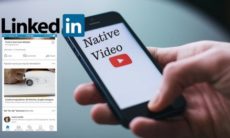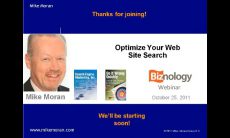I listened to Michael Brenner recently give a keynote talk to B2B marketers at the MeritDirect Coop client conference, and picked up scads of great insights, tips, and strategic wisdom I’d like to share. One of Brenner’s many career accomplishments was his early recognition of the value of web communities as a way to attract, engage, and establish a relationship of trust with customers and prospects. He successfully pioneered a strategic web portal for SAP on the subject of business innovation that took the concept of thought leadership to the next level.
These days, Brenner is a speaker and consultant on content marketing, with many lessons to share. Among them:
Find out what your buyers are looking for, and give it to them. Seems pretty simple, but most marketers begin with their products instead. Brenner’s approach becomes the essence of a successful content marketing strategy. Use the plethora of free tools to identify customer needs—Google search autofill, BuzzSumo, and Google Trends being obvious ones—and then develop content that answers those issues. “The buyer journey doesn’t start with a search for a product,” says Brenner. “It’s about a problem or a question.”
Focus on customer success. If you offer information that helps your customers and prospects succeed in their businesses, you’re on the right track. Brenner offered the example of the consulting giant Capgemini, which moved away from a marketing program featuring a famous golfer to an informative web portal Content Loop, which attracted a million visitors, drove $1 million in sales, and cost .1% of the golfer campaign budget. Later, Capgemini added a box introducing in-house subject matter experts—a move that was credited with $24 million in incremental revenue credited to the site.
Own your category. As traditional trade publications decline, companies have an opportunity to step in and deliver the information and connection that business buyers crave. Notable examples: Adobe created CMO.com. American Express’s OPEN Forum, which is the firm’s single most productive lead generator for merchant services. Boston Consulting Group’s BCGPerspectives. A consumer example: L’Oreal owns the e-commerce portal makeup.com, where it even sells competitors’ products alongside its own.
Take advantage of underleveraged internal resources. Your employees have ten times the number of connections on Facebook and LinkedIn that your company has. You can’t force them to share content, but you can encourage them to do so voluntarily. Furthermore, employees are often experts in their fields. Help them tell their stories and share their experience and advice with customers. Encourage them to build their personal brands, expand their networks and propel their careers forward. Brenner shared an example from LinkedIn itself, where three employees do eight posts a day, reaching 63 million connections, and driving 167,000 clicks.





